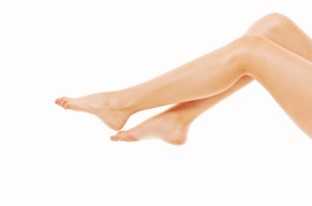Blog
Platelet Therapy Found Helpful with Foot and Ankle Injuries
 According to recent research, medical professionals have access to platelet rich plasma (PRP) that has the potential to treat injuries such as Achilles tendonitis, plantar fasciitis, and chronic ulcerations. When injuries occur, the platelets inside of body naturally go to the point of injury begin a healing process, which may be why platelet therapy has been so successful.
According to recent research, medical professionals have access to platelet rich plasma (PRP) that has the potential to treat injuries such as Achilles tendonitis, plantar fasciitis, and chronic ulcerations. When injuries occur, the platelets inside of body naturally go to the point of injury begin a healing process, which may be why platelet therapy has been so successful.
However, the area of the body, the health of the patient, and the seriousness of the injury are all factors in how effective the therapy may be. So far PRP therapy has been found to be the most helpful in soft tissue foot and ankle injuries. Many medical professionals believe this type of therapy could be an effective alternative to surgery.
If you are experiencing any foot or ankle pain and would like to consider therapy, contact Dr. Michael E. Newman of Pennsylvania. Our doctor will treat your foot and ankle needs.
Most common injuries
People who are constantly on their feet are prone to a variety of injuries. Therefore, it is important to take part in physical therapy in order to get back on the right track quickly.
What to do when injured
Physical Therapy – This specialized treatment will focus on the affected area, speeding up recovery and the overall healing process. This is important for those wanting to get back into the game quickly. It is a proven method that has helped millions of people return from any injury.
During physical therapy you will undergo regimented training to get back into full form. Training is often very difficult, especially at first when the foot feels weak. These are some steps physical therapy often involves:
- Basic stretching & twisting exercises – getting the feet’s mobility and flexibility up.
- Massaging – the therapist will massage the injured area in order to activate the muscles and relax them.
- Strengthening Exercises – this allows the muscles in the affected area to regain their full strength, a vital step towards full recovery.
With the advancements in technology and greater knowledge of how muscles and joints work, physical therapists can turn things around dramatically.
If you have any questions about foot therapy, feel free to contact our offices located in Plymouth Meeting and Ambler, PA. We offer the newest diagnostic and treatment technologies for all your foot and ankle needs.
Read more about foot therapy
Regular Foot Screenings Important in Catching Foot Issues Early
 According to Christina Drummond of the Star Press getting regular foot screenings is important to catch foot problems early, especially in those dealing with diabetes or obesity.
According to Christina Drummond of the Star Press getting regular foot screenings is important to catch foot problems early, especially in those dealing with diabetes or obesity.
Those suffering from obesity and diabetes are at an increased risk of circulation problems that can lead to amputation or other health problems.
Foot screenings involve an examination of the color and condition of the skin and by discussing any problems the patient may be having. Podiatrists can also use ultrasound technology to examine the blood flow in the foot and through the main arteries to identify any issues.
Any additional problems in the feet of those with obesity can be detrimental to foot health. If you have any concerns about your feet contact podiatrist Dr. Michael E. Newman of Pennsylvania. Our doctor will treat your foot and ankle needs.
Obesity and your Feet
Since your feet are what support your entire weight when standing, any additional weight can result in pain and swelling. Being overweight is one of the main contributors to foot complications.
Problems & Complications
Extra Weight – Even putting on just a few extra pounds could create serious complications for your feet. As your weight increases, your balance and body will shift, creating new stresses on your feet. This uneven weight distribution can cause pain, even while doing the simplest tasks, such as walking.
Diabetes – People who are overweight are at serious risk of developing type-2 diabetes, which has a drastic impact on the health of your feet. As you get older, your diabetes might worsen, which could lead to loss of feeling in your feet, sores, and bruises. You could also become more prone to various infections.
Solutions
Footwear – Specially made footwear that supports your joints, arches, and ankles, and allows room for good circulation is a great option to mitigate pressure and pain. A podiatrist will help you decide what works best for your specific needs.
Exercise – Exercise will help alleviate the pain and give your feet the strength it needs to support your body. Exercise also increases blood flow to your feet, allowing them to remain healthy and strong.
Most importantly, seek the help of a podiatrist for foot care if something is wrong or doesn’t seem to be working. A podiatrist will help you with any questions or information needed.
If you have any questions please feel free to contact our offices located in Plymouth Meeting and Ambler, PA. We offer the newest diagnostic tools and technology to treat your foot and ankle needs.
Using Honey on Cracked Heels
 Honey, while typically used as a cooking ingredient, is very useful in remedying dry and cracked heels. The mixture includes warming a cup of honey and stirring in two tablespoons of milk. Once those two ingredients are mixed, cut half of an orange and squeeze the juice into the mixture and it becomes a paste.
Honey, while typically used as a cooking ingredient, is very useful in remedying dry and cracked heels. The mixture includes warming a cup of honey and stirring in two tablespoons of milk. Once those two ingredients are mixed, cut half of an orange and squeeze the juice into the mixture and it becomes a paste.
Before applying the paste of the heels, wash feet and try to clean off dead skin with a pumice stone. Apply the paste to the heels and let it sit overnight. Regular use of the honey paste should heal the skin in under a month.
Cracked heels can become painful if left untreated. To learn more, consult with Dr. Michael E. Newman of Pennsylvania. Our doctor will attend to all of your foot and ankle needs.
The Truth about Cracked Heels
Cracked Heels
Cracked heels are unappealing, and make it harder for you walk around in sandals. Not only may they look bad, but they can also tear stockings, socks, and wear out your shoes. There are several methods to help restore a cracked heel and prevent further damage.
How do you get them?
Dry skin is the number one culprit in creating cracked heels. Many athletes, walkers, joggers, and even swimmers suffer from cracked heels. Age and skin oil production play a role to getting cracked heels as well.
Promote Healing
Over the counter medicines can help, especially for those that need instant relief, or who suffer from chronic dry feet.
Wear Socks – wearing socks with medicated creams, helps lock in moisture so it can stay on longer.
Moisturizers – applying it both day and night will help alleviate dryness which causes cracking.
Pumice Stones – these remove dead skin, and then you can massage cream onto your foot. This way the cream will be absorbed. The skin needs to be exfoliated; therefore the outer layer dead skin needs removal.
If you have any questions, please feel free to contact our offices located in Plymouth Meeting and Ambler, PA. We offer the latest in diagnostic and treatment technologies to meet all your needs.
Read more about Cracked Heels
Hawks Forward Sidelined With Broken Toe
 Earlier this month, Atlanta Hawks forward Michael Scott fractured his left big toe and will have to sit out for the next couple of games. Scott’s injury was caused during their loss against the Nuggets and was originally only thought to be a sprain.
Earlier this month, Atlanta Hawks forward Michael Scott fractured his left big toe and will have to sit out for the next couple of games. Scott’s injury was caused during their loss against the Nuggets and was originally only thought to be a sprain.
As soon as the forward returns to Atlanta to see the team’s doctors, the Hawk’s will find out when their key player will return. It is possible that Scott could be out until the play offs.
A broken toe is a very serious condition that should be treated as soon as possible. If you are experiencing problems with a broken toe contact Dr. Michael E. Newman and Dr. Denise Kohler of Pennsylvania. Our doctors will treat your foot and ankle needs.
What to Know About a Broken Toe
Although most people try to avoid foot trauma such as banging, stubbing, or dropping heavy objects on their feet, the unfortunate fact is that it is a common occurrence. Given the fact that toes are positioned in front of the feet, they typically sustain the brunt of such trauma. When trauma occurs to a toe, the result can be a painful break (fracture).
Symptoms of a Broken Toe
- throbbing pain
- swelling
- bruising on the skin and toenail
- the inability to move the toe
- toe appears crooked or disfigured
- tingling or numbness in the toe
Generally, it is best to stay off of the injured toe with the affected foot elevated.
Severe toe fractures may be treated with a splint, cast, and in some cases, minor surgery. Due to its position and the pressure it endures with daily activity, future complications can occur if the big toe is not properly treated.
If you have any questions please feel free to contact our offices located in Plymouth Meeting and Ambler, PA. We offer the newest diagnostic and treatment technologies for all your foot and ankle needs.
